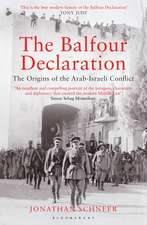Cultures of Communication from Reformation to Enlightenment: Constructing Publics in the Early Modern German Lands: St Andrews Studies in Reformation History
Editat de James Van Horn Meltonen Limba Engleză Hardback – 28 dec 2002
Din seria St Andrews Studies in Reformation History
- 15%
 Preț: 695.67 lei
Preț: 695.67 lei -
 Preț: 311.51 lei
Preț: 311.51 lei -
 Preț: 288.80 lei
Preț: 288.80 lei -
 Preț: 313.38 lei
Preț: 313.38 lei - 23%
 Preț: 932.49 lei
Preț: 932.49 lei - 30%
 Preț: 772.07 lei
Preț: 772.07 lei - 18%
 Preț: 1054.71 lei
Preț: 1054.71 lei - 18%
 Preț: 1000.27 lei
Preț: 1000.27 lei - 28%
 Preț: 880.05 lei
Preț: 880.05 lei - 30%
 Preț: 768.30 lei
Preț: 768.30 lei - 15%
 Preț: 240.92 lei
Preț: 240.92 lei - 26%
 Preț: 822.34 lei
Preț: 822.34 lei - 18%
 Preț: 1000.27 lei
Preț: 1000.27 lei - 30%
 Preț: 783.79 lei
Preț: 783.79 lei - 25%
 Preț: 766.66 lei
Preț: 766.66 lei - 18%
 Preț: 1000.27 lei
Preț: 1000.27 lei - 25%
 Preț: 498.88 lei
Preț: 498.88 lei - 18%
 Preț: 1053.16 lei
Preț: 1053.16 lei - 31%
 Preț: 767.88 lei
Preț: 767.88 lei - 18%
 Preț: 1054.71 lei
Preț: 1054.71 lei - 31%
 Preț: 764.87 lei
Preț: 764.87 lei - 18%
 Preț: 1062.62 lei
Preț: 1062.62 lei - 18%
 Preț: 1005.01 lei
Preț: 1005.01 lei - 25%
 Preț: 768.82 lei
Preț: 768.82 lei - 26%
 Preț: 765.19 lei
Preț: 765.19 lei - 18%
 Preț: 1062.98 lei
Preț: 1062.98 lei - 31%
 Preț: 764.20 lei
Preț: 764.20 lei - 30%
 Preț: 769.55 lei
Preț: 769.55 lei - 25%
 Preț: 768.30 lei
Preț: 768.30 lei - 25%
 Preț: 770.31 lei
Preț: 770.31 lei -
 Preț: 349.80 lei
Preț: 349.80 lei - 31%
 Preț: 765.84 lei
Preț: 765.84 lei - 26%
 Preț: 765.84 lei
Preț: 765.84 lei - 18%
 Preț: 1004.20 lei
Preț: 1004.20 lei - 27%
 Preț: 496.94 lei
Preț: 496.94 lei - 18%
 Preț: 1001.84 lei
Preț: 1001.84 lei - 25%
 Preț: 770.62 lei
Preț: 770.62 lei - 25%
 Preț: 739.65 lei
Preț: 739.65 lei - 25%
 Preț: 772.76 lei
Preț: 772.76 lei - 31%
 Preț: 767.47 lei
Preț: 767.47 lei - 18%
 Preț: 1063.89 lei
Preț: 1063.89 lei - 18%
 Preț: 1057.09 lei
Preț: 1057.09 lei - 26%
 Preț: 765.01 lei
Preț: 765.01 lei - 31%
 Preț: 764.20 lei
Preț: 764.20 lei - 18%
 Preț: 1005.04 lei
Preț: 1005.04 lei - 25%
 Preț: 768.46 lei
Preț: 768.46 lei - 31%
 Preț: 763.39 lei
Preț: 763.39 lei -
 Preț: 376.48 lei
Preț: 376.48 lei
Preț: 1000.27 lei
Preț vechi: 1219.84 lei
-18% Nou
Puncte Express: 1500
Preț estimativ în valută:
191.39€ • 200.91$ • 158.87£
191.39€ • 200.91$ • 158.87£
Carte tipărită la comandă
Livrare economică 10-24 aprilie
Preluare comenzi: 021 569.72.76
Specificații
ISBN-13: 9780754605485
ISBN-10: 0754605485
Pagini: 312
Dimensiuni: 156 x 234 x 19 mm
Greutate: 0.45 kg
Ediția:1
Editura: Taylor & Francis
Colecția Routledge
Seria St Andrews Studies in Reformation History
Locul publicării:Oxford, United Kingdom
ISBN-10: 0754605485
Pagini: 312
Dimensiuni: 156 x 234 x 19 mm
Greutate: 0.45 kg
Ediția:1
Editura: Taylor & Francis
Colecția Routledge
Seria St Andrews Studies in Reformation History
Locul publicării:Oxford, United Kingdom
Cuprins
Contents: Introduction, James Van Horn Melton; Violence and urban identity in early modern Augsburg: communication strategies between authorities and citizens in the adjudication of fights, B. Ann Tlusty; Patricide and pathos: a 1565 murder in deed and word, Joy Wiltenburg; From public event to publishing event: court funerals and the print medium in early modern Germany, Jill Bepler; Anticlericalism in Bamberg on the eve of the Peasants' War, William Bradford Smith; Anabaptist liars: communicating and concealing the faith in early modern Tyrol, D. Jonathan Grieser; Preaching and discipline: the case of 17th-century Rostock, Jonathan Strom; Debating the meaning of pilgrimage: Maria Steinbach, 1733, Marc R. Forster; The public of confessional identity: territorial church and church discipline in 18th-century Hesse, Robert von Friedeburg; Conspiracy and denunciation: a local affair and its European publics (Bern, 1749), Andreas Würgler; Garlic and the Jews: Jörg Breu the Elder's The Mocking of Christ as Protestant "Thesenbild" or Catholic devotional image?, Andrew Morrall; Standing by the ancient faith: Fribourg's fountains and the coming of the Reformation, Donald A. McColl; Musical pedagogy in the German Renaissance, Susan Forscher Weiss; "Not like the unreasoning beasts": rhetorical efforts to separate humans and animals in early modern Germany, Susan C. Karant-Nunn; Expanding the therapeutic canon: learned medicine listens to folk medicine, Martha Baldwin; The debate between Johann Weyer and Thomas Erastus on the punishment of witches, Charles D. Gunnoe, Jr.; Index.
Recenzii
'... the volume include[s] a number of very strong contributions providing some fascinating insights into the history of early modern Germany.' History '... a collection of absorbing and thought-provoking case studies, each having valuable implications for general historical interpretation...' Sixteenth Century Journal
Descriere
This volume of 15 interdisciplinary essays is based on papers given at a conference at Duke University in 1998. Focusing on the territories of the Holy Roman Empire from the early Reformation to the mid-eighteenth century, the volume examines some of the structures, practices and media of communication that helped shape the social, cultural, and political history of the period.




















